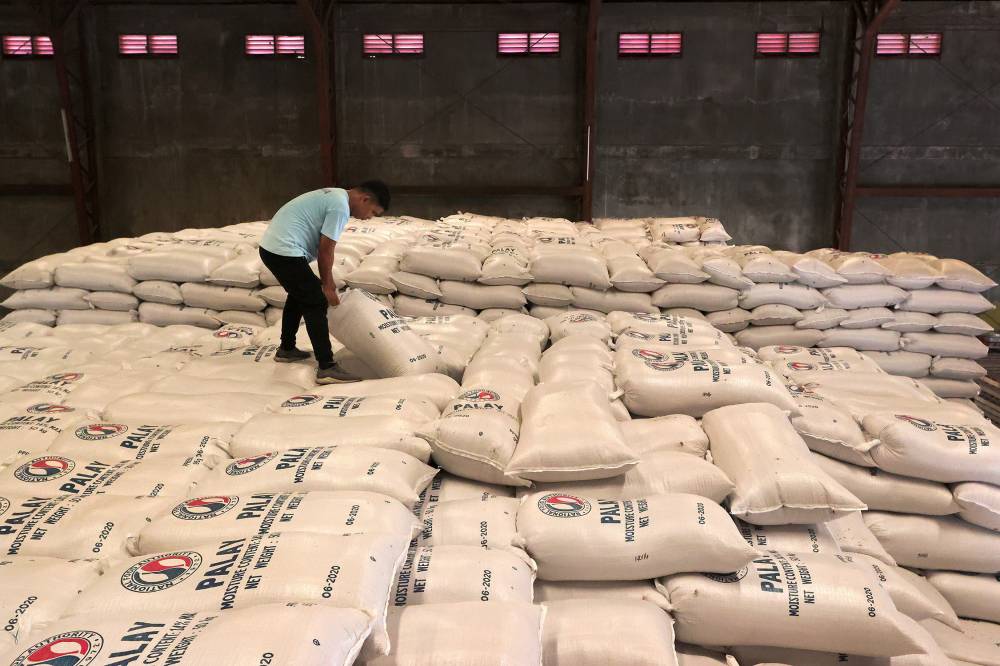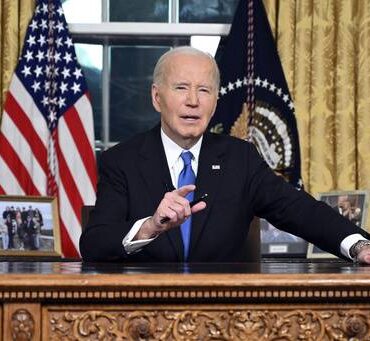How can NFA sell 300K tons of ‘aging’ rice stocks?

Amid the high prices of rice, the National Food Authority (NFA) is burdened with some 300,000 tons of the staple food in its warehouses that are “aging” and must be disposed of soon.
However, President Marcos must first allow the Department of Agriculture (DA) to declare a national food emergency since this is required by the rice tariffication law (RTL) before the NFA can sell its stock.
Agriculture Secretary Francisco Tiu Laurel Jr. said in a media briefing that NFA warehouses were almost filled to the brim, and it would need to dispose of its old rice stock to give room for additional rice from the upcoming harvest season.
The DA defines “aging” rice as that which has been stored for an extended period, often for more than six months, when the quality may start to degrade but remains fit for consumption.
“The declaration of a food security emergency is a last resort or option for the DA,” Tiu Laurel said.
The interagency National Price Coordinating Council (NPCC) already approved “in principle” a resolution pushing for the declaration of a national food emergency due to an “extraordinary” increase in rice prices.
“I haven’t received the official recommendation of the NPCC because the details are still with the working group. But once it comes to my table, the chances are we will declare [a food security emergency] so that we can release the stocks of NFA,” the agriculture chief said during a joint market inspection on Thursday.
As low as P33 a kilo
The DA is authorized by the law to declare a food security emergency in the event of a supply shortage or extraordinary price fluctuations upon the NPCC’s recommendation.
Once an emergency is declared, the DA may release and sell the NFA’s stockpile in areas where there is a supply shortage or an extraordinary increase in rice prices.
The DA said releasing the buffer stock would help bring down prices and at the same time decongest warehouses in preparation for the February harvest.
Since the RTL prohibits the NFA from selling directly to the public, Tiu Laurel said the stocks could be sold to local government units, the Armed Forces of the Philippines, the Philippine National Police, other government agencies and government-owned and -controlled corporations.
He said the NFA rice could be sold to national or local government offices at P36 a kilo next month and by March, the selling price can decrease to P33.

Lower price cap
Separately, Tiu Laurel implied that the maximum suggested retail price (MSRP) for imported rice would eventually be slashed to P50 a kilo depending on global rice price movements.
The MSRP for imported rice, currently set at P58 a kilo, will be enforced initially in Metro Manila markets starting Jan. 20.
Tiu Laurel admitted that the MSRP of P58 a kilo was on “the higher end” of the price range but noted that this was only an initial level, with plans to adjust the price ceiling.
“So basically, after two to three weeks, the plan is to set the MSRP at P55 per kilo. After another two weeks, maybe it will go down to P52. If world prices continue to drop, it could reach P50 soon. That’s the intention,” he told reporters.
As of Thursday, however, imported regular milled rice was already being sold from P40 to P48 a kilo, while imported well-milled rice was priced from P44-P52 as against P50-P58 a year ago.
Local regular milled rice ranged from P37 to P50 a kilo compared with last year’s P45-P53. Local well-milled rice retailed between P40 and P53 from P49-P55 last year.
Rice emergency doubted
Tiu Laurel also confirmed reports of “poor quality” rice being sold for P58 a kilo amid the government’s attempts to bring down rice prices, but said these were “isolated cases.”
He blamed profiteering by some rice traders for the failure of the DA to pull down rice prices, despite the ample supply due to the combined local and imported supplies plus the reduction of tariff on rice imports.
For Raul Montemayor, national manager of the Federation of Free Farmers Cooperatives, there is no national food security emergency on rice.
“There is no shortage in supply, there is no calamity, harvests will start again, and prices, while still high, are actually slowly going down,” Montemayor said in a Viber message on Thursday.
“What we have is a failure of the government agencies to run after and discipline profiteering importers, wholesalers and retailers,” he pointed out.
Montemayor asked the mechanism used by the NPCC to make this recommendation: “Has such a formula been devised? If so, why only now when the price spike started way earlier in the latter part of 2023 and peaked in early 2024?”





















